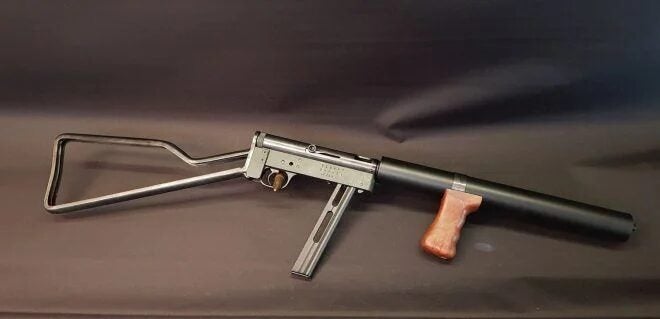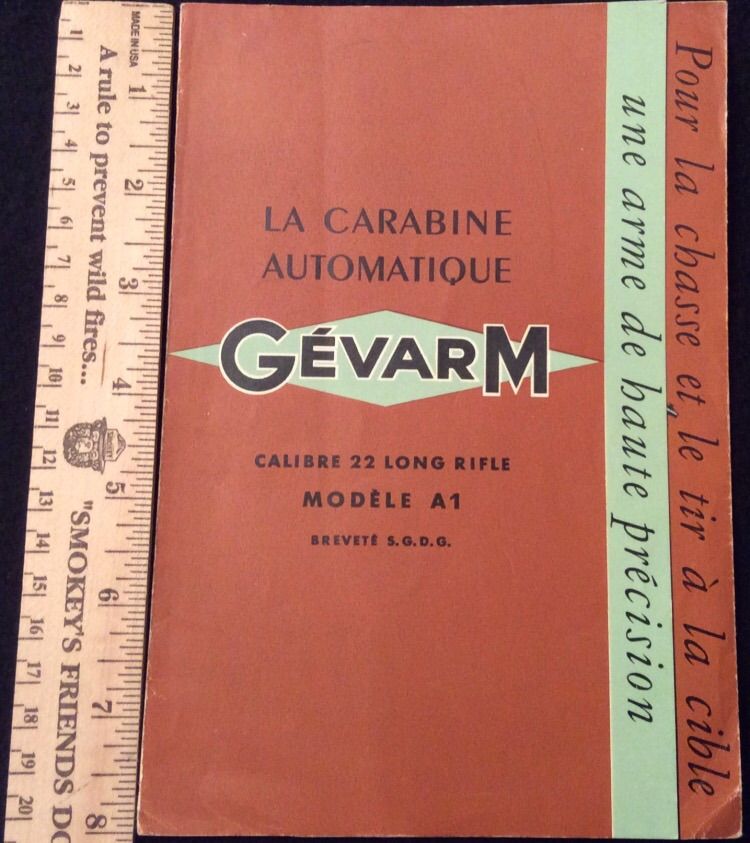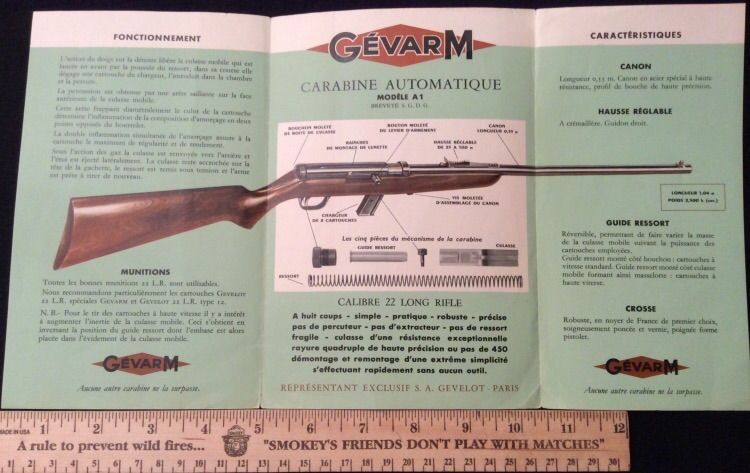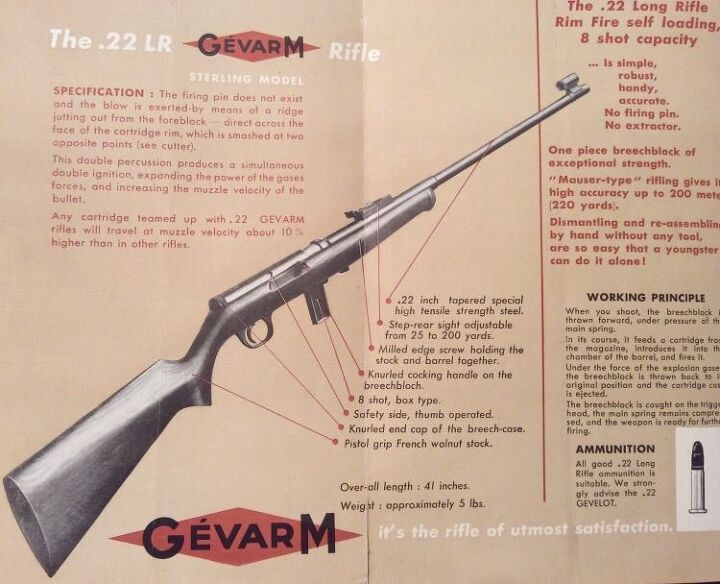Welcome back to another edition of The Rimfire Report! This ongoing series is about the rimfire firearm world and its many types of rifles, handguns, ammunition, and shooting sports! In the last installment, we brought you all back a bit in time to when the Mitchell Arms company produced one of the most unique and fondly remembered 50-round rotary drum magazines for the Ruger 10/22 rifle. Many people who have owned these, including those of you in the comments, lamented that while they have great memories of shooting with these unique 50-rounders, most of you have stopped due to concerns over the deterioration of the bolt, and other plastic components. I suppose for now they’ll just have to remain a nice rimfire junkie’s collector’s item. This week we’re headed to France, or rather talking about a French-made gun that is not only really rare in the United States, but rare for rimfire firearms in general. We’re talking about our titular firearm for today’s Rimfire Report – the Gevarm series of open-bolt 22LR semi-auto rifles.
More Rimfire Report @ TFB:
- The Rimfire Report: The Forgotten Mitchell 50/22 50-Round 10/22 Magazine
- The Rimfire Report: The Eternal Debate – SBR or Takedown 22LR Rifle?
- The Rimfire Report: The Discontinued (again) Springfield M6 Scout

The Gevarm E series can be easily identified by its flat, alloy receiver.
The Rimfire Report: France’s Gevarm 22LR Open Bolt Semi-Auto Rifles
The Story of the Gevelot Group – A French Daewoo?
The Gevarm series of semi-auto open bolt rimfire rifles comes directly as a result of the company “Gevelot” diversifying its operations in the early 1800s. Founded in 1820 in the Paris area, the Gevelot Group (the parent company of Gevarm) primarily manufactured sabers for the Royal Gendarmerie. In 1823, Gevelot received authorization to use fulminate mercury for the purpose of manufacturing primers and whole cartridges. This authorization was renewed by Louis-Philippe, King of the French, in March 1845, and later by Louis-Napoléon Bonaparte, President of the French Republic. This early shift to the firearms world allowed the new subsidy Gevarm Cartridge to survive well into the late 20th century by producing various types of shotgun and rimfire ammunition.
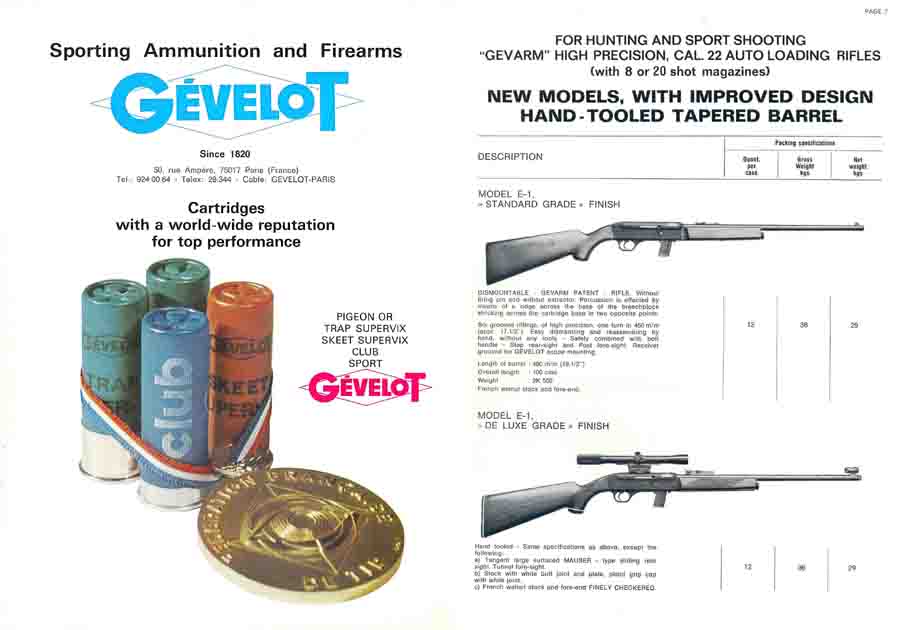
The production of ammunition greatly expanded from 1820 to 1980, solidifying Gevelot’s global reputation in the field. The company’s legacy extended beyond ammunition as it diversified its portfolio into firearms beginning in the 1960s. At the same time Gevelot was manufacturing ammunition in 1932, the company ventured into positive displacement pumps for petroleum, food, and other industries through its subsidiary SGMM, which would later become PCM.
The 1950s and 60s witnessed the conglomerate’s expansion into various mechanical and textile-related industries, and eventually entered the field of forgings for the automobile industry through its subsidiary Gevelot Extrusion. However, sometime in the 80s, Gevarm and Gevelot Extrusion ceased operations. The Gevelot Grop now primarily produces positive displacement pumps, specifically for the oil industry, and no longer deals with firearms or cartridges. Gevelot’s story is somewhat similar to the Korean Daewoo company, which spans both the firearm industry, as well as several other non-firearm-related industries.
The Guns of Gevarm
Gevarm emerged in the early 1960s as a dedicated gunmaker. Specializing in open-bolt designs, Gevarm attempted to market to the demands of the military and law enforcement first before eventually getting into the French, and then American commercial markets. Before their semi-auto rimfire rifles, they also attempted to produce a lower-cost alternative to the French MAT-49 9mm submachine gun. This firearm dubbed the Gevarm D4, proved to come too late to be widely adopted by the French military, and its roughly 3,500 units produced mainly saw use with the French Customs Service and the French Gendarmerie.

The Gevarm D4, Previous iterations of the D series 9mm submachine guns featured wooden stocks and furniture
Differences Between the A and E Models
Gevarm produced A and E models of their 22LR open-bolt rifles with the only truly major difference between any of them being the receiver. The A models all featured a cylindrical receiver, while all of the E models featured a flat-sided rectangular receiver

The telltale round Hump of the A series rifles from Gevarm – The gun pictured here is ready to fire with its bolt open and locked to the rear.
The A1 model served as Gevarm’s first rimfire offering. an open-bolt, magazine-fed, 22-lr rifle with fairly simple sights, an open ejection port, and a walnut stock. Gevarm quickly adapted the design to encompass several other models, including a takedown version. The first adaptation was the A2 which introduced tangent rear sights, target aperture front sight, and a stepped barrel contour.

The A3 made some simple changes, switching to a plastic buttstock, and drastically reducing the size of the opening near the breech area which coincidentally also only allowed the rifle to eject to the right-hand side. Variations would continue all the way up to the A7 model which takes a huge departure from the rest of the line by being an export model and firing from a closed bolt to allow for its importation into the USA.
The E1 model, a takedown version, featured an aluminum/zinc alloy casting for the receiver chassis, introduced the 20-round magazine, a metal wire stock, and is by far the most popular version of the rifle from what I can tell. Between all of the A models, E models, and even the one-off bolt-action C model, Gevarm’s offerings were more reminiscent of a modern firearms catalog with each variation mostly being a difference in barrel length, accessories, or other minor features.
Where the Gevarm Rimfire Rifles Are Today
These rifles certainly aren’t dead and there is a very small yet high demand for these rare French rifles. While most people are content to have them as collector’s items, a lot of people still shoot these rifles and oftentimes modify them. The rifles themselves weren’t very expensive back when they were introduced, only costing about $50 in the US during the 1960s. However, shortly after the ATF banned open bolt semiautomatic designs in the early 1980s, firearms like this quickly became expensive and highly sought after since they were already in the United States before the ban. Today you’d be lucky to find one of these on Gunbroker, although aftermarket magazines can easily be found there meaning there is still a small market for rifles and related accessories. Luckily, it seems that most of the rifles share magazine compatibility meaning most of the newer 20-round magazines should be compatible with the older ones.
If you’ve ever had experience with the Gevarm in any of its variants, please feel free to let us know in the comments. Throughout the many forums, articles, and videos I’ve absorbed about these rifles, very few of them comment on the accuracy of the rifles, instead focusing more on the reliability of these rifles which was said to be great. Let us know your thoughts and experiences down in the comments and as always thanks for stopping by to read The Rimfire Report.

 Your Privacy Choices
Your Privacy Choices
